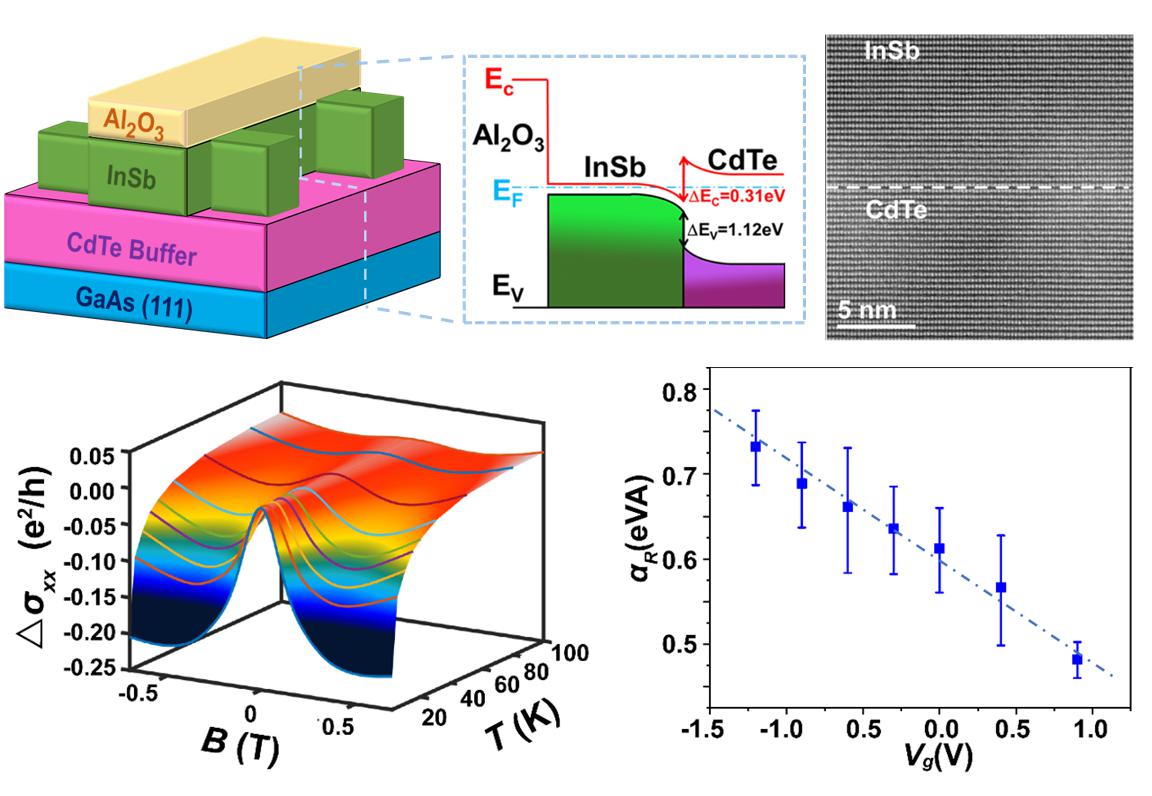The manipulation of spin-orbit coupling (SOC) in solid-state materials has led to great success in creating topological insulators/semi-metals and realizing various spin-orbit effects (e.g., spin Hall effect and spin-orbit torque) which offer enormous opportunities for low-power spintronics applications. In order to further broaden the in-depth scope of this new spin-orbitronics research field, new breakthroughs may emerge by incorporating large SOC materials into the heterostructure/superlattice forms so that additional interfacial and low-dimensional effects can help to better tailor the spin/magnetic orders in an electrically controllable manner. Accordingly, Prof. Xufeng Kou’s group from School of Information Science and Technology (SIST) has designed the lattice-matched InSb/CdTe heterostructures by molecular beam epitaxy (MBE) and realized effective manipulation of SOC through both deliberate structural engineering and electric-field manipulation. These finding, titled “Highly Efficient Electric-Field Control of Giant Rashba Spin-Orbit Coupling in Lattice-Matched InSb/CdTe Heterostructures”, have been recently published on ACS Nano.
Experimentally, Prof. Kou’s group have epitaxially grown high-quality InSb/CdTe heterostructures on the 3-inch GaAs substrate by MBE. Owning to the energy band bending at the hetero-interface, the strong Rashba effect is introduced to drive the spin precession where pronounced weak anti-localization (WAL) cusps are observed up to 100 K. With effective quantum confinement and suppressed bulk conduction, the SOC strength is found to be enhanced by 75% in the ultra-thin InSb/CdTe film. Most importantly, we realize the electric-field control of the interfacial Rashba effect using a field-effect transistor structure, and demonstrate the gate-tuning capability which is 1-2 orders of magnitude higher than other materials. The adoption of the InSb/CdTe integration strategy may set up a general framework for the design of strongly spin-orbit coupled systems that are essential for CMOS-compatible low-power spintronics.
ShanghaiTech University is the first affiliation. ZhangYong (2018-class PhD) and XueFenghua (2019-class Master) are the co-first authors. Professor KouXufeng from School of Information Science and Technology (SIST) is the corresponding author. In addition, Prof. YangYumeng of SIST and Prof. SongCheng of Tsinghua University have made great contributions to this work. This work is supported by the National Key R&D Program of China, the National Natural Science Foundation of China, the Strategic Priority Research Program of Chinese Academy of Sciences, the Major Project of Shanghai Municipal Science and Technology, the Shanghaitech Quantum Device and Soft Matter Nano-fabrication Labs, and Merck POC program.
Link: http://dx.doi.org/10.1021/acsnano.0c07598

Epitaxial growth of lattice-matched InSb/CdTe heterostructures and the effective electric-field control of the giant interfacial Rashba spin-orbit coupling effect




 沪公网安备 31011502006855号
沪公网安备 31011502006855号


